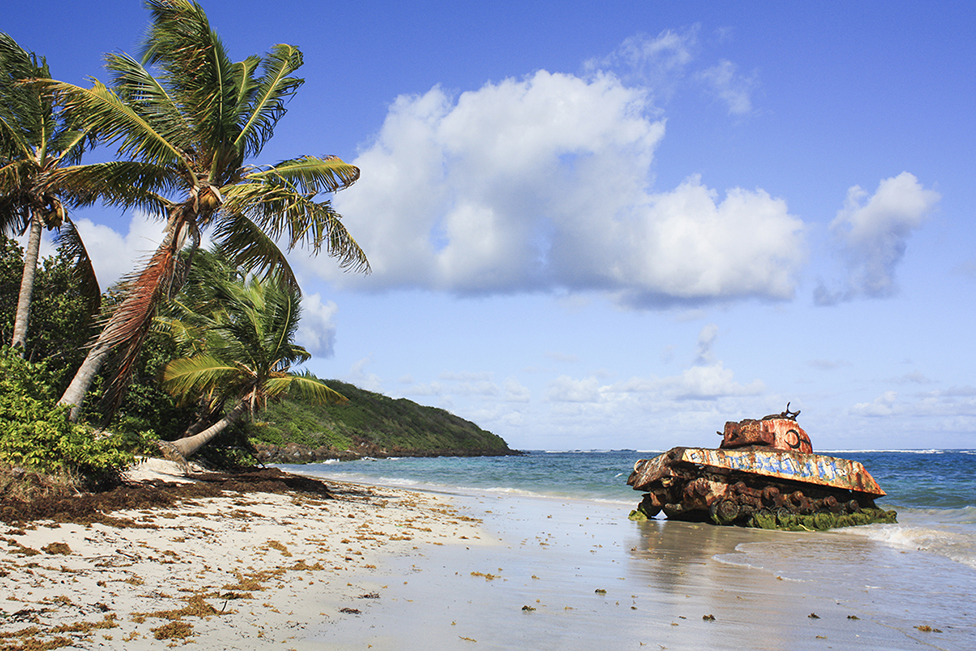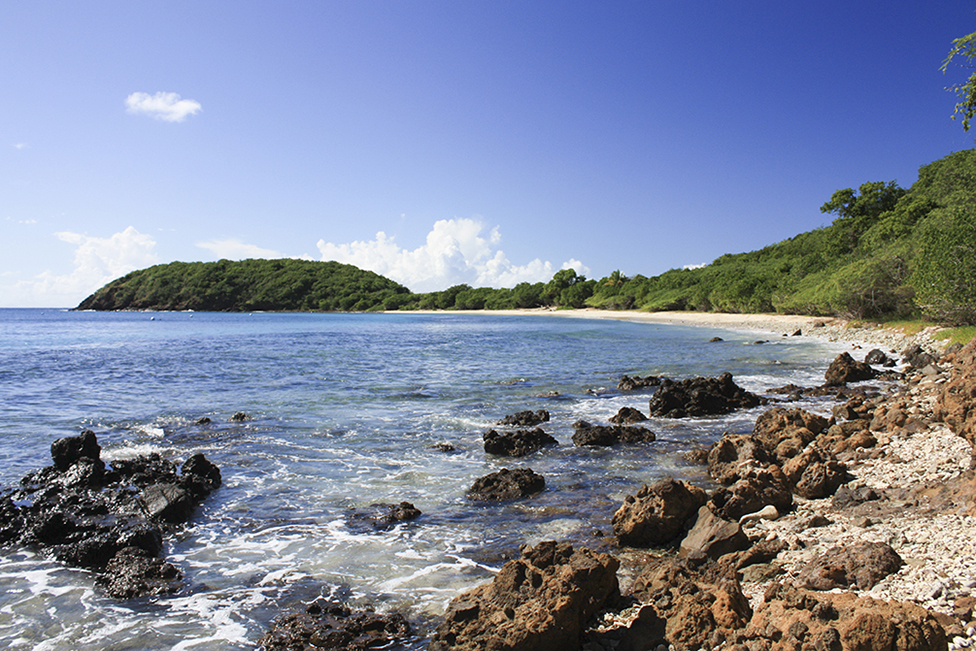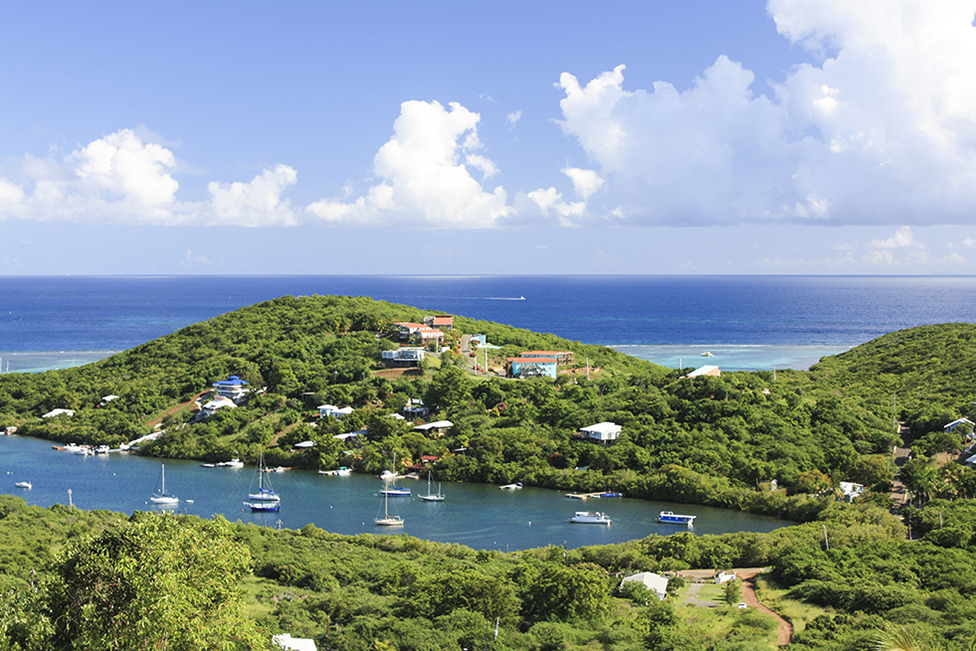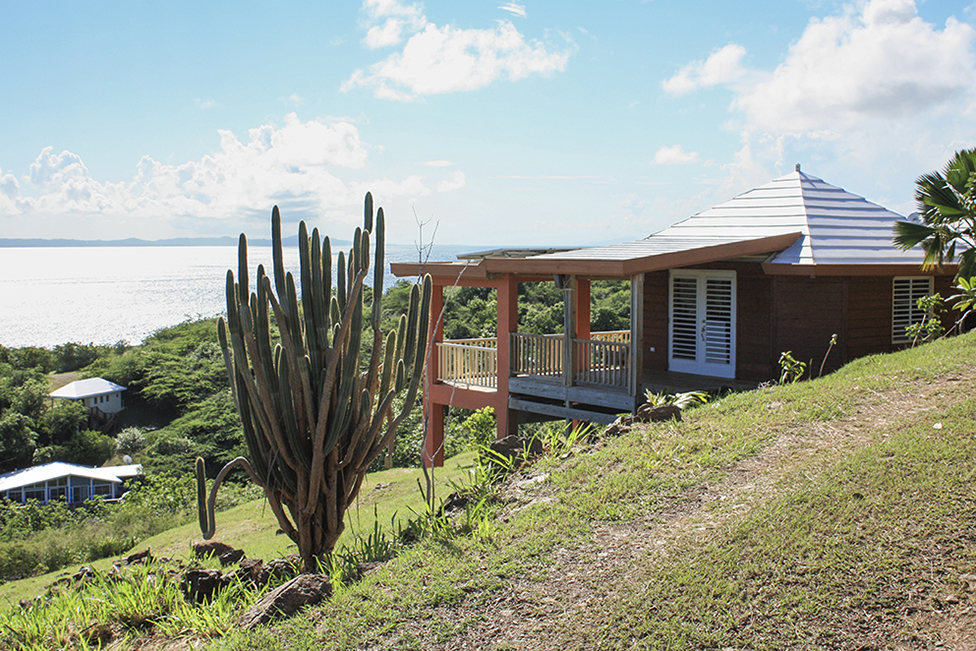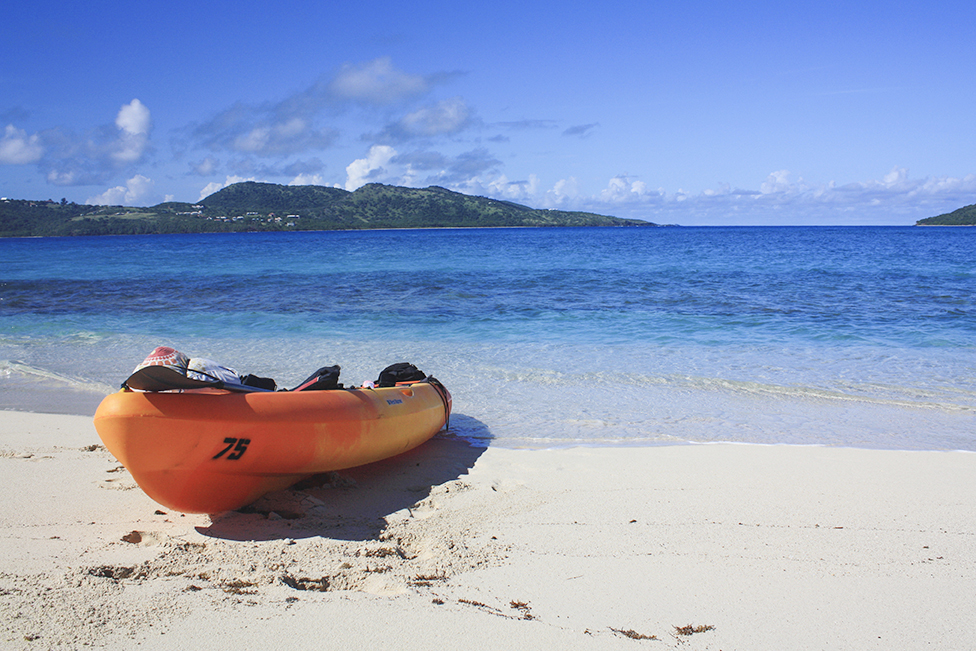A relatively undeveloped island off Puerto Rico mainland offers solitude (amid unexploded bombs)
The Washington Post
By Erin E. Williams
August 31, 2015
The four-foot-tall yellow sign on the chain-link gate didn’t just say “Danger: No trespassing” in block letters. It also had a black-and-red image of a bomb and the warning “Explosives — unexploded ordnance” in English and Spanish. Nevertheless, I squeezed though the gate’s opening. My husband, Andrew, followed me down the path to Carlos Rosario Beach.
We didn’t necessarily need to take such measures to find solitude on Culebra, part of a 23-island archipelago off the eastern coast of Puerto Rico. About a quarter of the archipelago is a U.S. Fish and Wildlife Service-administered national wildlife refuge. Until the mid-1970s, the U.S. military used some of the islands for gunnery and bombing practice. Today, most of Culebra’s refuge areas are off-limits because of their delicate ecosystems — or unexploded ordnance.
Beautiful and relatively undeveloped, the island provided a welcome respite from crowded Washington for a long weekend. And because we were willing to take the trails less traveled (we checked with a park ranger before ducking past that warning sign), we were able to go from one serene setting to another, achieving an almost completely disconnected experience.
Off the grid
Two days earlier, Andrew and I had left San Juan for Culebra on an eight-seater plane. As we bobbed up and down on the bumpy 35-minute flight, I watched mainland Puerto Rico’s suburbs disappear and our shadow glide over islets 2,500 feet below.
We’d rented a one-bedroom hilltop home in southwestern Culebra, attracted by the property listing noting that the villa was entirely off-grid. Indeed it was: Three tanks collected rainwater, and solar panels provided electricity. Because we had only sporadic mobile access, I abandoned my phone in a drawer.
We accessed our little villa by a driveway so steep that our Jeep seemed ready to tumble into sailboat-flecked Fulladoza Bay below. It was far enough away from Dewey, Culebra’s one small town, that peeping coqui frogs provided the only nighttime sounds.
The first night, I turned off the lights and sat on the deck to watch the expansive sky. Two bats swooped under the roof, hunting mosquitoes. I admired my nocturnal companions and the moonlit boats floating in the bay, so involved in my surroundings and the present moment, I didn’t need to be plugged into anything else.
The next morning, we headed down the precarious driveway and through Dewey to the northwestern corner of the island, where a nearly-empty parking lot and a ramshackle concession greeted visitors to Culebra’s most famous landmark: Flamenco Beach.
Flamenco is undeniably gorgeous. It regularly appears on top-global-beaches lists; in February, TripAdvisor rated it the world’s eighth best. Its mile-long white crescent hugs a clear, calm bay. Only the concession and a small hotel interrupt the palm trees flanking the sand. Pelicans and boobies dive into the water.
Even when busloads of weekend day-trippers unload onto Flamenco, there’s room for everyone. During our weekday visit, perhaps a hundred people spread across the sand.
At Flamenco’s western end, two old tanks, relics of the military exercises, rest on the beach. One sits on a grassy mound near the sand; another, in breakers under palm trees. Algae adhering to the latter undulates in the waves, and the decaying machinery stands out in absurd contrast against the sky and sand. Graffiti has turned these once-lethal hulks into surreal art installations, a colorful reminder of the island’s controversial past.
Sand and solitude
Guidebooks mention the trail to Carlos Rosario Beach, but most visitors don’t notice the gate tucked into a shady corner of Flamenco’s parking lot. In my clumsy Spanish, I asked a nearby ranger whether I should be worried about the “Danger” sign. Although some rangers recommend a longer shoreline route that is definitely free of explosives, he responded (in smiling English): “Go right ahead — you will be the first ones at the beach today! It will be hot, so make sure you have plenty of water.”
Beyond the gate, the walk to Carlos Rosario was an easy 20 minutes. Tall grass crowded the well-trodden path, but the only hazards were sunburn, mosquitoes . . . and perhaps live ordnance. So we were careful not to stray into the bushes.
As we neared the beach, yellow-flowered trees offered peekaboo panoramas of the sea. I watched the ground, careful not to step on red and purple hermit crabs scuttling across the path. The grass thinned, and we emerged sweaty and muddy from the trees.
We were the only people on the paradisiacal shoreline. In both directions, white sand sparkled in the sun. Green hills plunged into the azure water. With each small wave, pebbles washed up on the beach and tinkled back down.
We walked along the water’s edge, along piles of sun-bleached coral and black rocks, until we found the perfect tree. We laid a couple towels in its shade. Later, a dozen other visitors would join us , but for now, we had our own little piece of the Caribbean.
The next morning, we headed across the island, driving past a wildlife refuge and houses scattered among the hills. At the Zoni Beach entrance, hand-painted signs warned nighttime visitors away from the nesting areas of leatherback and hawksbill sea turtles.
We were alone on the stretch of gentle waves at Culebra’s eastern edge, but I had already arranged for a getaway to an even less-frequented spot. A local outfitter had dropped off a two-person kayak for a self-powered day trip to Culebrita, a one-square-mile island, less than two miles off Culebra, that’s part of the national wildlife refuge. Culebrita Lighthouse, one of the Caribbean’s oldest, crowns its top in decrepit glory.
We climbed into the plastic kayak — a hardy sit-on-top so wide, it looked impossible to capsize. As we paddled out from Zoni, a salt breeze rippled the water. A magenta jellyfish pulsed at its surface. Fish darted under the boat. We glided over reefs, watching corals and sea fans pass beneath the kayak like the islets underneath the plane.
Only a handful of people visit Culebrita each day, and today was no exception. We pulled our boat onto an unclaimed beach fringed with dense trees that climbed the slope to the lighthouse a few hundred feet above, hidden by the foliage. It was an ideal hideaway for a mid-morning siesta. Not another soul was in sight.
On the return to Zoni, the wind strengthened, pushing us toward Culebra. Waves pounded the shore. Lingering in the swells, we waited for a break and paddled for the beach. Then a wave rose under me. I hovered on its crest for one dreadful moment, and the bow surged into the air and plunged into the water. These kayaks aren’t that hard to capsize, I thought as I flew off the boat and the wave crashed over my head.
By the time I stood up, Andrew was already wading toward me.
“You look like you’ve been in a train accident,” he said.
My hair stuck to my face, my rash guard was wadded under my life jacket, my shorts were turned nearly backwards and my knees bled. A nearby family, picnicking on the now-populated beach, watched with amusement as I slogged onto the beach and sat down in a sodden but contented heap.
It was an ungraceful tumble back into civilization — and probably good practice for returning to the rough waters of non-Culebra life.
Original at The Washington Post.
PDF here: 2015-09-06 Culebra.

